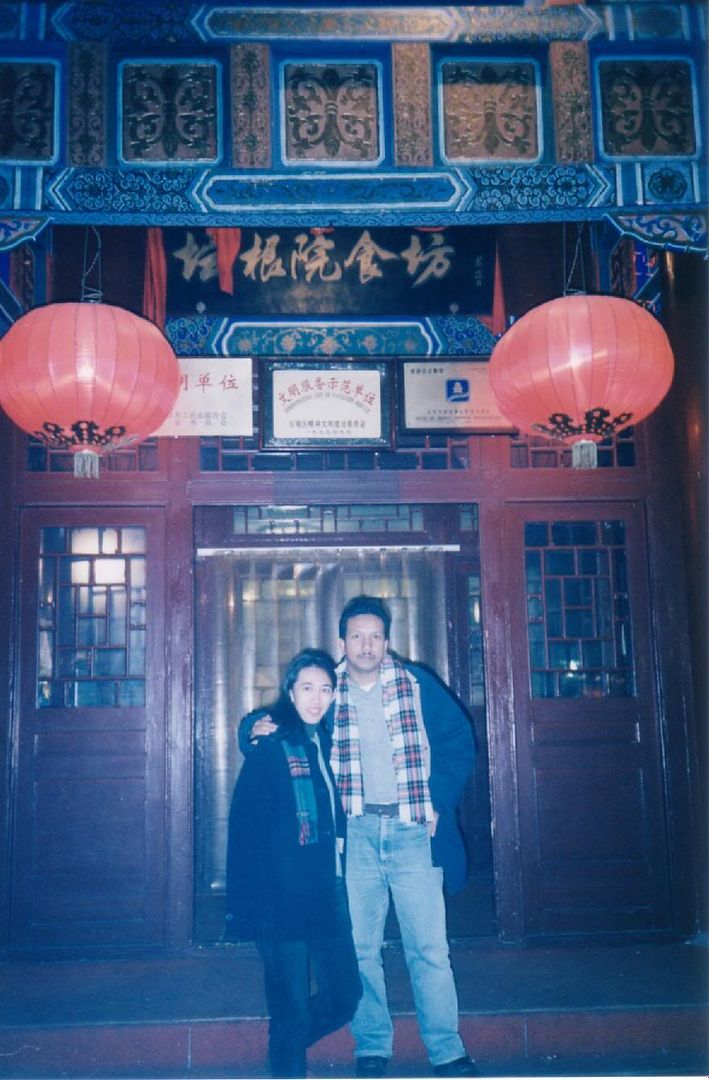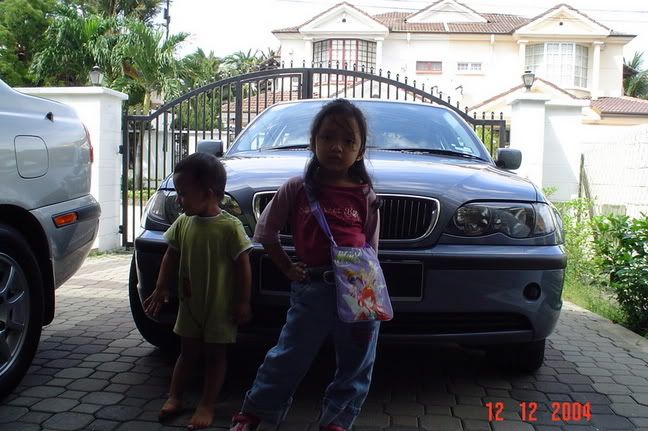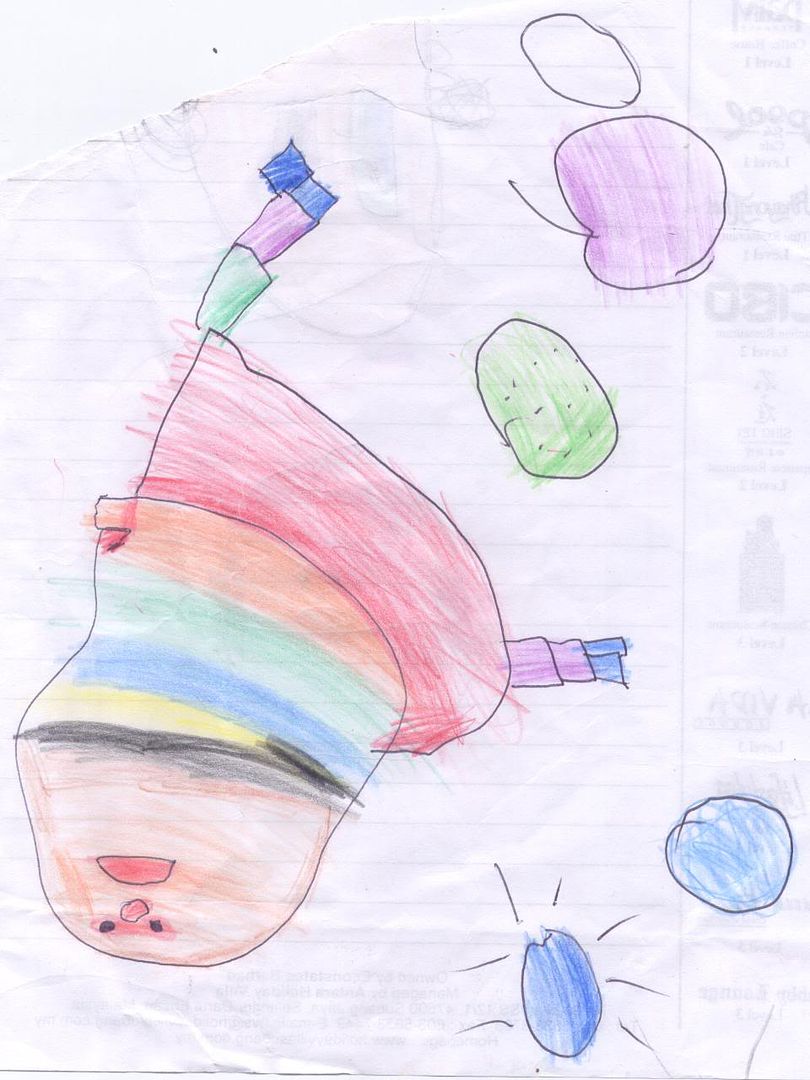
|
Thursday, October 13, 2005
 Adam woke up this morning with the biggest, sweetest dimpled smile, you almost couldnt see his eyes. It reminds me of these words: I see trees of green, red roses too I see them bloom for me and you and I think to myself what a wonderful world. He told me that he needed his diaper changed. I did just that. He looked at me and smile again. This is a very good morning for Adam. I see skies of blue and clouds of white the bright blessed day, the dark sacred night and I think to myself what a wonderful world. He went out on his own after I put on his shoes to the waiting car with his dad running the engine while waiting for me. No hassle. Got to his car seat and amused himself looking at baby birds flying in and out the nest perched on the palm tree right outside the balcony. The colors of the rainbow so pretty in the sky are also on the faces of people going by I see friends shaking hands saying how do you do they're really saying I love you. He sat there in his baby chair quietly all through out the journey. Once in awhile I hear him chuckle. I asked him what's funny. He said he saw the birds again. He thought it was the same one outside the house, following him. We reached the babysitter's place and away he went. He turned back once and again. Then turn around and ran to me. He wanted to kiss me goodbye. He kissed right smack on the lips and smiled and waved and walked away. I hear babies crying, I watch them grow they'll learn much more than I'll ever know and I think to myself what a wonderful world yes I think to myself what a wonderful world oh yeah ... isnt it a wonderful world? signing off..Hazelinesnow at 8:06 AM [ | ] {Takes all sorts to make the world .. the world..} Sunday, October 09, 2005
 Both Balqis and Adam always argue about which cartoon program to watch. They sometimes are unable to come to terms and normally, Balqis will give in. When Balqis wants Jojo Circus in Playhouse Disney, Adam would disagree. Adam wants Samurai Jack in Cartoon Network and Balqis will let out a long wail screaming her disagreements. This happens all the time especially right after channel cruising. And normally it will be these three choices: Disney Channel, Cartoon Network or Playhouse Disney, at the most. Their favorite I would say would be the Playhouse Disney. Both enjoyed almost all of the programs there except on days where they chose to be very difficult. And of course, as a standard rule, Adam simply disagrees with all of his sister's choices. I recently read an article about how kids process television that I would like to share: HOW CHILDREN PROCESS TELEVISION Television is an important learning tool for children, as well as a primary instrument in their socialization. American children spend an average of 28 hours each week watching television, but not all children interpret what they see in the same manner. At different ages, children watch and understand television in distinct ways, depending on the length of their attention span, the way in which they process information, the amount of mental effort they invest, and their own life experiences, according to Wendy Josephson, Ph.D., a child development expert and author of Television Violence: A Review of the Effects on Children of Different Ages. Following is a brief summary of how children at different stages of physical and mental development understand television. BIRTH TO 18 MONTHS Babies can pay attention to a television screen for very short periods of time but are easily distracted by toys and other activities. What they experience are displays of light, color and sound. Children in this age group may recognize characters, but are unable to grasp program content. AGES 18 MONTHS TO 3 YEARS Children become full-fledged "viewers" around age two-and-a-half. By the time they are three, most children have a favorite program. During this time children are increasingly able to pay attention and extract meaning from what they watch. They are likely to imitate the behaviors they see and hear. They prefer educational programs made for children but also like comedies, game shows and the visual action of cartoons. The patterns of watching television during this stage will probably persist through elementary school. AGES 3 TO 5 YEARS This audience is beginning to find meaning in content. They can identify "good" and "bad" characters, although "bad" often means scary. Preschoolers are drawn to watching cartoon violence because it is usually accompanied by loud music, a lot of movement and sound effects. Some studies have shown that preschool children, after watching violent cartoons, play more aggressively. At this stage, children are unclear about the difference between reality and fantasy and can identify easily with cartoon or puppet characters. AGES 6 TO 8 YEARS During these years, the amount of TV children watch drops, because they are spending more hours in school. When they do watch, children are interested less in educational television than in cartoons, situation comedies and action programs. They also tend to watch for relaxation and amusement, and are generally uncritical of content. At this stage, children can understand story plots and interpret them in light of the emotions and motivations of TV characters. They will use stereotypes to classify characters as good or bad if no information about a character's past is given. The effects of media violence in the development of aggression in children is especially critical around the age of eight. Children, particularly boys, tend to identify with unrealistic, aggressive and often violent heroes. (Research indicates that the attraction among boys for these heroes is the power displayed by the characters, not necessarily violence or conformity with sex stereotypes). AGES 9 TO 12 YEARS By age ten, "real" is more likely to mean "possible in real life." Children will often believe that what they watch on TV is a reflection of real life. When asked who they wanted to be like, eight to ten year olds in one study named unrealistic characters from television much more often than characters whom they knew to be more like real people. Boys often refer to character traits such as "brave, powerful and strong" when describing their heroes For girls, there appears to be a growing recognition that aggression is not appropriate for them, which may account for less interest in viewing violence on television and less likelihood of using aggression in real-life situations. The behavior of girls who watch violent content is often more aggressive than girls who do not watch. AGES 12 TO 17 YEARS Adolescents watch less television than younger ages, and their tastes change dramatically in the types of programs they do watch. When high-schoolers do watch, they begin to like dramas, including soap operas for girls, sports, and music videos. They continue to like comedies but watch fewer cartoons. This age group is more likely to doubt the reality of television and less likely to identify with television characters. Those young people who continue to identify with TV characters are the ones likely to be more aggressive, especially if they continue to fantasize about aggressive-heroic themes. About 80 percent of adolescents watch horror movies or movies that scare them. Suggested Citation: "How Children Process Television," Issue Brief Series. (1997). Studio City, CA: Mediascope Press. Sources: 1. Wendy L. Josephson, Ph.D., Television Violence: A Review of the Effects on Children of Different Ages , Canadian Heritage, 1995. 2. Mediascope, National Television Violence Study , 1996. signing off..Hazelinesnow at 10:27 PM [ | ] {Takes all sorts to make the world .. the world..} |

 Hazel'sThoughts...
Balqis's & Adam's Mom & Dad
Balqis's & Adam's Photo Album
Balqis's & Adam's Art Attack
Balqis's & Adam's Little Sprout
Balqis's & Adam's Recipes
Video Clips...
Pick of the Month
F.V.L        Archives04/01/2004 - 05/01/2004 05/01/2004 - 06/01/2004 06/01/2004 - 07/01/2004 07/01/2004 - 08/01/2004 08/01/2004 - 09/01/2004 09/01/2004 - 10/01/2004 10/01/2004 - 11/01/2004 11/01/2004 - 12/01/2004 12/01/2004 - 01/01/2005 01/01/2005 - 02/01/2005 02/01/2005 - 03/01/2005 03/01/2005 - 04/01/2005 04/01/2005 - 05/01/2005 05/01/2005 - 06/01/2005 06/01/2005 - 07/01/2005 07/01/2005 - 08/01/2005 08/01/2005 - 09/01/2005 09/01/2005 - 10/01/2005 10/01/2005 - 11/01/2005 11/01/2005 - 12/01/2005 12/01/2005 - 01/01/2006 01/01/2006 - 02/01/2006 02/01/2006 - 03/01/2006 03/01/2006 - 04/01/2006 04/01/2006 - 05/01/2006 12/01/2007 - 01/01/2008 |
|||||||
